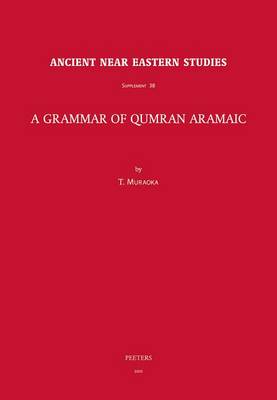Ancient Near Eastern Studies Supplement
1 primary work • 2 total works
Volume 52
A fifth-sixth century clergyman-cum-theologian, Jacob of Serugh (also
spelled Sarug), was an extremely prolific writer. Not counting a number
of works in prose, he is said to have written nearly 800 homilies,
mostly on themes of theological import or biblical stories and
personalities. These homilies are composed in metre: each line has
twelve vowels.
So far less than 150 such homilies have been edited
and/or translated. Hexaemeron is an exposition of the first six
days of the universe. Jacob dedicated an extra homily to the sabbath,
making a total of seven homilies. This genre was known earlier in Greek.
Jacob's is the first of the kind in Syriac.
Currently the only
complete text of Jacob's Hexaemeron is available in an edition by
Bedjan (1905-10), but with no translation. This is the first time that
this highly interesting work is made available in its entirety,
accompanied by an English translation. The editor studies six complete
manuscripts and one containing only two homilies. None of these seven
manuscrips was available to Bedjan, and one of them is presumably as old
as the principal manuscript used by Bedjan.
spelled Sarug), was an extremely prolific writer. Not counting a number
of works in prose, he is said to have written nearly 800 homilies,
mostly on themes of theological import or biblical stories and
personalities. These homilies are composed in metre: each line has
twelve vowels.
So far less than 150 such homilies have been edited
and/or translated. Hexaemeron is an exposition of the first six
days of the universe. Jacob dedicated an extra homily to the sabbath,
making a total of seven homilies. This genre was known earlier in Greek.
Jacob's is the first of the kind in Syriac.
Currently the only
complete text of Jacob's Hexaemeron is available in an edition by
Bedjan (1905-10), but with no translation. This is the first time that
this highly interesting work is made available in its entirety,
accompanied by an English translation. The editor studies six complete
manuscripts and one containing only two homilies. None of these seven
manuscrips was available to Bedjan, and one of them is presumably as old
as the principal manuscript used by Bedjan.
v.38
This is a comprehensive reference grammar of Qumran Aramaic. Not only Aramaic texts from Qumran caves, but also contemporary texts originating from other neighbouring locations in the Judaean Desert such as Nahal Hever, Murabba'at, Jericho, and Massada are covered. It would be an important tool of study for specialists in Aramaic linguistics, the Jewish culture of the Second Temple period, and the New Testament. The scope and nature of the grammar is comparable to that of Muraoka - Porten, A Grammar of Egyptian Aramaic (2nd revised ed., 2003).

